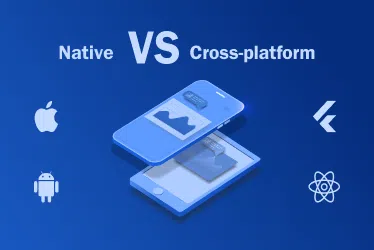React Native App Development Company
Deliver native-like experience to your customers through powerful cross-platform applications written in React Native. Empower your business with a robust mobile application delivered by SoftTeco – a company that specializes in React Native app development services.
Why Choose React Native App Development?
React Native is a powerful solution that brings native-like look and feel to cross-platform applications and enables developers to write a single code that can be run on multiple platforms. This framework is a perfect choice for those organizations looking for a mix between quality and cost-efficiency, and SoftTeco is here to deliver the requested solution exactly how you need it. Be it app development, migration, or design, our experienced team of mobile developers will handle the challenge flawlessly.
React Native Development Services that SoftTeco Offers

Consulting
SoftTeco will walk you through every step of the app development and will help you define the product vision alongside its main requirements. We will analyze both the provided information and the market environment in order to develop a solid development strategy.

Cross-Platform App Development
Our mobile development team designs React Native applications for iOS and Android that boast exceptional UI and provide a stable and robust performance. By using out-of-box tools and technologies, we deliver high-quality apps on time and in accordance with the requirements.

Migration and Integration
If you need to migrate an existing application to React Native, SoftTeco is here to help. With our migration services, you can rest assured that your app’s performance remains glitch-free while we are handling its migration.

Support and Maintenance
To maintain your app’s high security and performance, you will need to constantly update it, and here is where SoftTeco steps in. We offer post-launch support and maintenance services that include regular updates and patching, as well as functionality adjustments.
Benefits of React Native
Speed and performance
Due to a flexible structure of threads and many other built-in features, React Native offers an impressively fast performance.
Fast building
Due to out-of-box tools and extensive documentation, this framework is fast to build and thus reduces the development time.
Reusable code
The JavaScript codebase can be reused to build apps on all needed platforms, including web and mobile.
Versatile
The code that you write runs equally well on all platforms of choice, thus, making React Native apps highly versatile and cost-efficient.
Hire React Native Developers
Delegate the development of your application to skilled developers who excel at delivering seamless performance and user experience to all platforms of choice. By partnering with SoftTeco, you can rest assured in the quality and security of our React Native app development services, as we use our extensive experience and knowledge to make truly unique software products.
Why SoftTeco?
Calculate Team Cost
Get a free and instant team cost estimate in just 4 easy steps. Answer a few quick questions to see an approximate sum based on hourly rates and time required. Try it now!
What our clients say
Calculate Team Cost
Get a free and instant team cost estimate in just 4 easy steps. Answer a few quick questions to see an approximate sum based on hourly rates and time required. Try it now!

